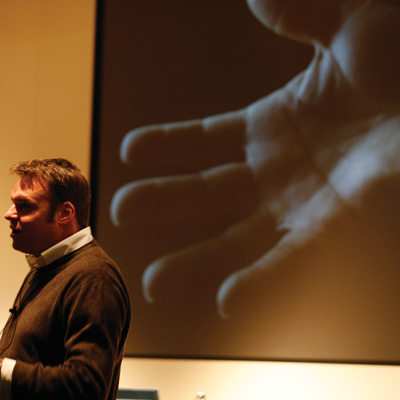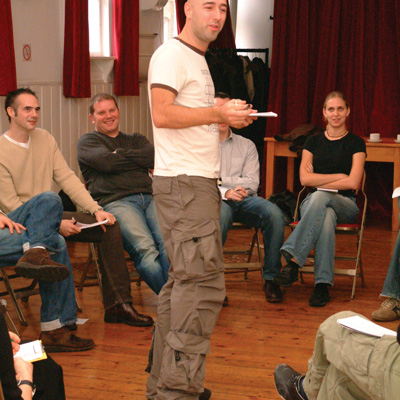Learning curve
Cash and time pressures can make spending on training seem a luxury, but as confidence returns and Government bursaries come on-stream, design groups are beginning to invest in their future, discovers Emily Pacey

After a year in the doldrums, and a long uphill struggle, professional training is hitting its stride. According to new research by the Design Business Association, more than 70 per cent of design groups offered staff internal or external training in the past year, and, despite huge public spending cuts, the Government is now pouring cash into professional training bursaries.
’This year demand has gone completely bonkers, which is quite surprising, but it appears that confidence is really returning to the market,’ says Deborah Dawton, chief executive of the DBA, which offers a range of training courses. She adds, ’In the past, there used to be a real stigma about training and admitting that you might not know something, but that seems finally to have gone’.
This year’s big trend is training for those in top positions. D&AD’s popular Sharpen Your Creative Ambition course is a full three days spread over four weeks – relatively long for a continuing professional development course – and it is aimed at people moving into bigger roles at consultancies. Laura Woodroffe, D&AD director of education and professional development, says, ’As a creative you rise through the ranks on the basis of your design ability, then you become design director or creative director and suddenly you’re having to talk directly to the finance director or even running your own business entirely. This course is about teaching you those skills.’
This year, the DBA introduced a new residential course aimed at senior staff and design business owners called Re-imagining Leadership. The two-day course will take place in York, says Dawton, because ’it is harder for people to leave’. The first will take place next week and, with about 35 participants, will ’read a bit like a who’s who of design’, she adds.
Dawton attributes recent interest in sharpening leadership skills to the ’need to get the most from your staff, and to soul-search and to find out whether there are better ways of doing things, since design groups are needing to drive greater efficiencies and to find ways to hang on to their talent’.
In the past, there used to be a real stigma about training… but that seems finally to have gone
Deborah Dawton, Design Business Association
It seems that the Government agrees. This year, Westminster City Council launched a funding initiative subsidising creative businesses to send their staff on training courses. ’We have half-day modules costing £99 that people are getting on to for £20 at the moment – a colossal saving,’ says Dawton. D&AD has tapped about £20 000 in bursary funding from Westminster since August, across about 40 course places.

Likewise, the publicly-funded Business Link recently introduced a nationwide training fund geared towards leadership and skills. This offers up to £1000 of grant funding per person, making the top-level courses offered by organisations like the DBA and D&AD affordable to the majority.
For the remaining 30 per cent of design groups that don’t offer training to staff, the Design Council gives a message of action: ’If you just sit on your hands and worry then nothing is going to happen at all,’ says its head of design skills Lesley Morris. ’But if you invest a little bit in going to events and on training courses, you actually give yourself some space to think more creatively about what your opportunities might be.’
Money is not the only hurdle for consultancies wanting to invest in training. David Worthington, UK Design Alliance advisory board chairman, says, ’Another resource that consultancies lack is time. You have a very willing audience for CPD, but not a willing buyer.’ Worthington believes that the design industry is ’very interested’ in CPD, but that providers need to ’do things in a way that people can take on board’.
For those who cannot afford to allow staff to be out of the office for days – or even half days – at a time, there are other ways to boost knowledge and skills within the studio.
You could, suggests Dawton, send one staff member on a course and then arrange a feedback session in which that person passes their learning onto the rest of the team. For even more cash- and time-poor consultancies, the Internet offers rich resources.

’There are some great webinars coming out of the US now, available for modest annual subscriptions,’ says Dawton. She recommends www.lynda.com’s online tutorials, and also announces that the DBA is looking to condense some of its courses for digital application.
Overall, Dawton is pleased by the state of design CPD. ’The challenge used to be to get anyone to do any training at all, but because markets change so fast now, people realise that they need help to stay ahead of the game,’ she says.
In the past, there used to be a real stigma about training… but that seems finally to have gone





Training is a vital part of our business set up at Flock of Pigs. But rather than spend a fortune on presentation skills training events we have killed two birds with one stone by becoming members of BNI and utilising the BNI Training modules to develop our presentation skills.
This represents real value for money and we gain business back in return through being members of the BNI referral organisation.